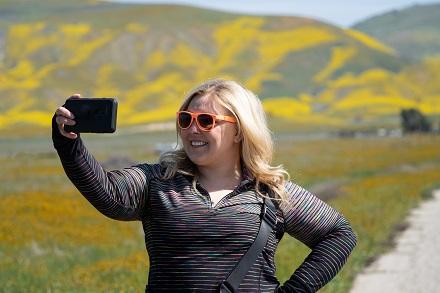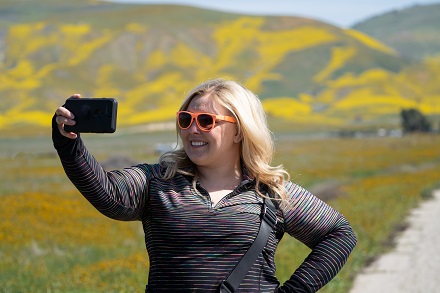

That’s the word from Michelle Kerns, deputy superintendent for the Glen Canyon Recreation Area, a unit of the U.S. National Parks Service.
“We saw this huge rise in social media, especially Instagram,” Kerns told ABC’s Nightline. “I think it’s a huge contributor.”
In Horseshoe Bend, an incredibly scenic horseshoe-shaped incised meander of the Colorado River located near Page, Ariz., and part of the Glen Canyon National Recreation Area, tourism has jumped from 4,000 visitors a year to 2.2 million in recent years.
To handle the increase in visitors, many of whom no doubt are first-timers who saw photos of the area on social media, Kerns and her team have taken extra security precautions — including building a railing on the cliffside to keep tourists who snap selfies safe. (Seriously, accidental suicide by selfie is a thing).
But she and others also are concerned about the toll so much new traffic will take not only on the land she oversees but also at other national parks.
“When you add two million visitors to a place like Horseshoe Bend, you have to manage for their needs, and oftentimes, it’s that really unsexy conversation of human waste and trash,” Kerns told Nightline.
Jerry Ginsberg, a photographer who has spent 30 years taking pictures of national parks and public lands, expressed concerns on Nightline (from his perch at the Grand Canyon, no less) the the increase in foot traffic could diminish the very features of the parks that are attracting new visitors.
“One thing that makes me very sad is to see canyons and forests and trees that were formerly pristine just completely destroyed,” he said. “This sandstone that we’re seeing here in the Southwest is really very soft, and with a greater influx of people, it creates more wear and tear, and eventually, given enough time, they’ll lose their scenic attractiveness.”
But make no mistake: The National Park Service and other groups are leveraging this newfound social standing to help diversify the types of travelers who visit national parks.
“Most of the visitors to our parks and protected areas are upper middle class, white and slightly older,” Ashley D’Antonio, a recreation ecologist and associate professor at Oregon State University, told NPR.org in May. “There [have] been a lot of groups that use social media to get more people of color, or people that aren’t traditionally seen in our protected areas, out promoting and saying that this is a space for you, too.”
“We see social media and technology as an opportunity to help share public lands and the national parks with a broader audience,” chief spokesman Jeremy Barnum, told Fortune.com, adding that parks have been expanding Wi-Fi and cellular access — both for safety reasons and to help people more easily share their experiences.

